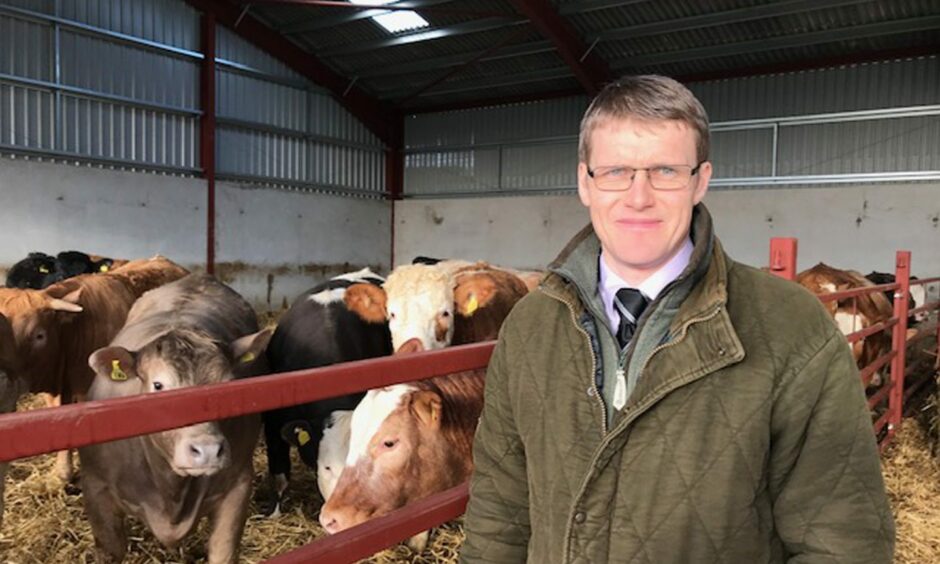More than 70 farmers gathered at an open day at Thura Mains near Bower in Caithness to learn about cost-effective winter diets from host farmers John and Ronald Mackay.
The event, organised by Harbro in conjunction with local distributor W&A Geddes, focused on suckler cow production at the family unit run by Ronald and his wife Kirsteen, together with parents John and Isobel.
They run 120 suckler cows, predominantly Simmental crosses which go to the Charolais bull, while heifers run with the Salers or Hereford for ease of calving.
Spring barley is grown for feed and malting, as well as gluten free oats which have been grown on contract since 2020.
“We were keen to grow these oats as we’ve never had wheat in our rotation,” said Ronald.
“The cropping has been better in the last few years and we have had a real boost with them.”
The additional straw has been utilised to lower the costs of wintering the suckler cows, with no detrimental effect on fertility, body condition and output on resulting cow progeny.
“We used to feed grass silage to the cattle then moved to ammonia treated straw but reduced availability led us to utilising the oat straw,” added Ronald.
The cows receive a diet of oat straw, whole oats and pot ale syrup supplemented with Super Suckler SEC mineral, which compensates for trace elements that are deficient in a forage based diet of straw.
Ronald explained that one added benefit of the system had been the reduced straw requirement for bedding cows through the winter.
“On this diet, the cows are a lot drier,” he said.
Benefit of the system
“We are using half the amount we normally would in the bedded courts, the straw lasts a lot longer, there is less mucking out and the cattle are a lot cleaner. Mucking out is definitely easier work and the courts are more pleasant to work in.
“I would also say that the cows keep their condition, they don’t get so fat and as a result, are calving slightly better.”
Up until a few years, young stock were previously fed as one group and all sold on at 17 months.
Steers and heifers are now split and receive different diets, created for their specific markets.
“When there were restrictions on deadweights, we decided to push the steers on more quickly, getting them to the required lower weight at an earlier age” said Ronald.
“We’ve been able to do this and it has resulted in less cattle to keep over the summer and more time for the arable work.”
Steer calves receive creep feed and then a Maxammon barley based diet with Champion Rumitech 35 and barley straw, before being sold as forward yearlings in April at Quoybrae.
Heifer calves are fed on a more traditional silage based system, with a reduced amount of Maxammon barley and Rumitech 35, then turned to grass and sold at Quoybrae in September.
The cattle generally average £1,300 at both sales.
Ronald explained the importance of Maxammon grain’s high pH as being a key factor to improving performance without having a challenge from acidosis.
“The ration is simple to feed, we have had no issues and I would say that it suits the Charolais breed with its faster growth compared to native breeds.”
David Mackenzie, Harbro ruminant director said: “There is great emphasis on suckler cow production but regardless of breed choice, the focus should be working to create a system tailored to the individual farm location.
“Every business should have a clear understanding of what the market requires and everyone should be focussed on supplying that. Whether selling store or finishers, no one will ever get a premium for supplying something the market doesn’t want.”


Conversation